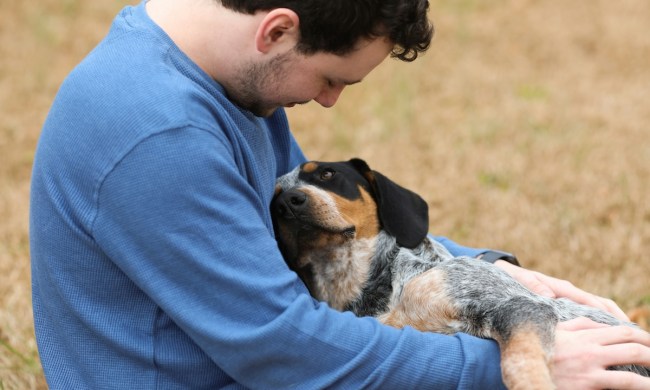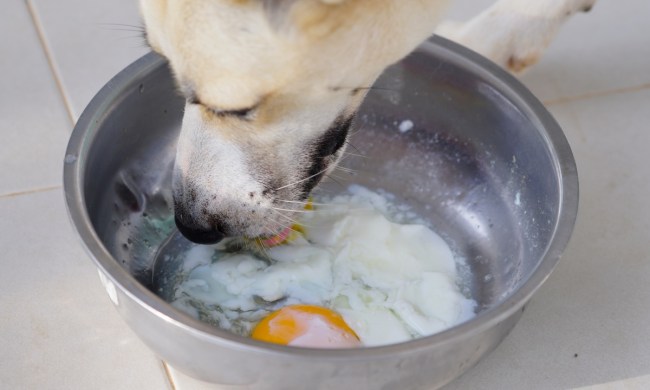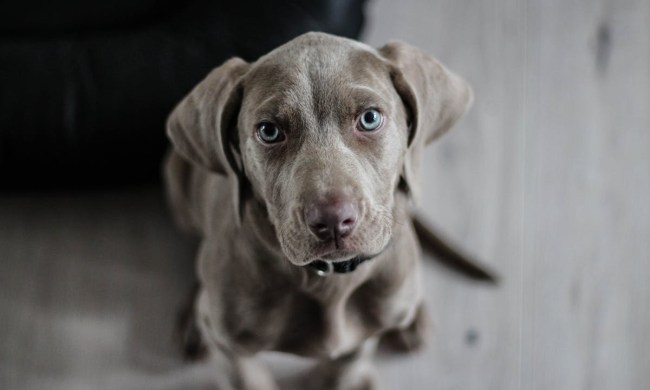Ah, spring! And nothing says “goodbye, cold weather” better than a good old-fashioned Easter egg hunt. This traditionally child-centric activity dates back to the 1700s in the U.S., when the Pennsylvania Dutch believed in an egg-laying rabbit and encouraged their children to build nests in the grass for her to lay her eggs in.
Centuries later, the annual tradition still delights children, whose parents dutifully hide plastic eggs filled with treats and baskets stuffed with plastic grass and chocolate bunnies. And because we believe the custom can be just as fun for pet parents and their canine family members, here are our suggestions for setting up an Easter egg hunt for your favorite dog.
Determine the location
Before you buy the treats and invite your guests, research the best place to host your canine-friendly Easter egg hunt.
- Backyard. Look no further than your own backyard — if you have one. Your dog probably knows every smell within its confines anyway, so adding new scents to the area will definitely be a fun surprise.
- Public area. If you and your pup have a favorite public area to play in, scout to see if it might be a good option for an Easter egg hunt. First, secure permission for the activity. Then, consider how you will hide his treats in a public area without having them discovered by other animals or curious humans. Remember, the Easter holiday is extremely popular with families, so public areas may be extra busy this time of year.
- Inside. There’s absolutely nothing wrong with staging an Easter egg hunt inside, especially if the weather isn’t cooperating where you live. Let’s face it: Our pups just aren’t picky. As long as they get a tasty treat or two from the experience, they won’t fault you for staying indoors.
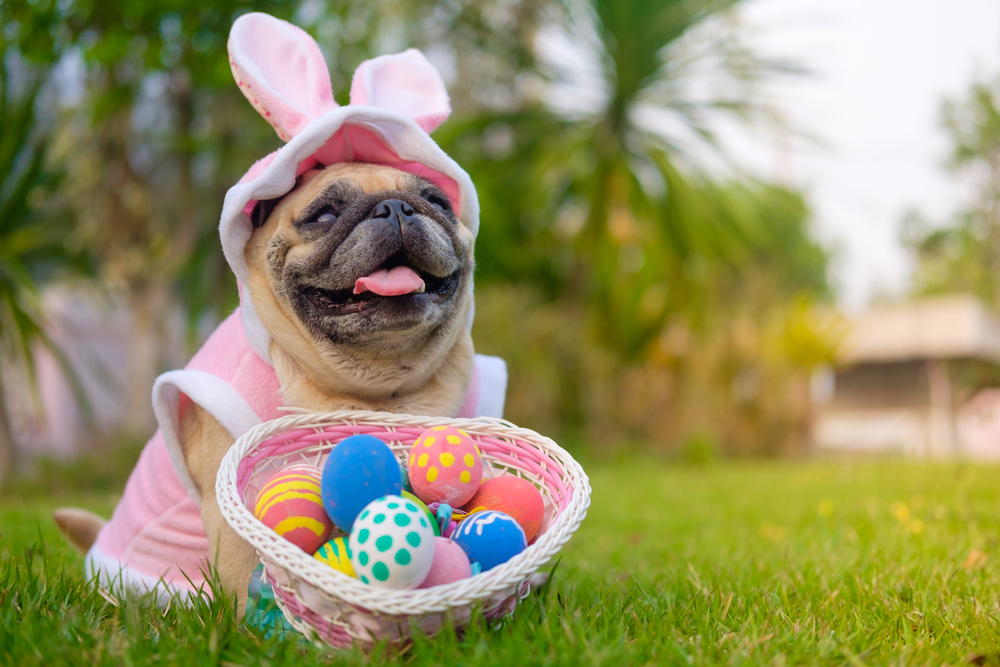
Choose the treats
With careful consideration, this activity can be as fun for your pet as it is for you. The goal is to modify the human egg-hunting experience to be safe and rewarding for your dog.
With that goal in mind, choose nutritional treats in a quantity that won’t spoil his appetite. Healthy alternatives to the traditional dog treat can be baby carrots, sweet potato and banana slices, or hard-boiled eggs without the shell.
Shy away from hiding treats in plastic eggs, especially if your dog is likely to chew on the container. Plastic eggs can splinter, creating a choking hazard or obstruction if swallowed. Instead, opt for a dog toy treat dispenser or interactive treat puzzle.
Invite participants
Half the fun of an Easter egg hunt is sharing it with friends and family, so think about others who might enjoy this activity, too. But first consider this:
- If your dog has resource-guarding behaviors, it might be best to keep this a solo activity. However, If your dog shares well with others, it could be fun to have a group Easter egg hunt with other pet parents. How many to invite depends entirely on everyone’s ability to get along when food is involved, as well as how many dogs will fit comfortably in the hunting area.
- Have a separate hunt for the little humans. Although watching kids and dogs interact is delightful, the goodies humans eat on this holiday (think chocolate and other sugary treats) can be extremely toxic for furry family members.
- Be mindful of others, especially if you’re planning a hunt in a public place. Establish rules of play and make sure all pet parents know them before the hunt begins.
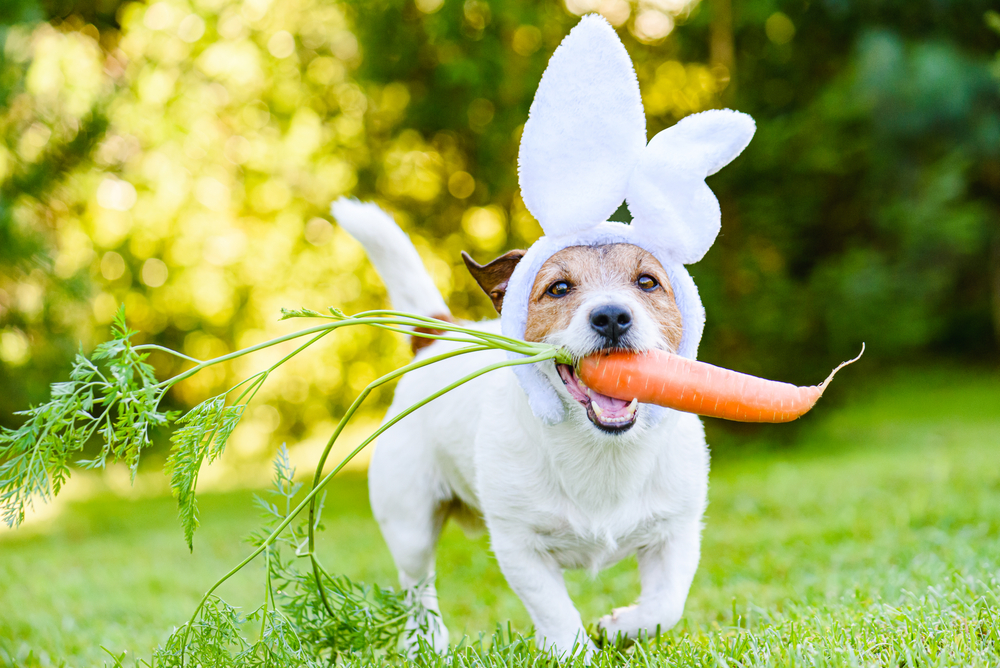
Hide the treats
Some dogs have a better sense of smell than others, so make sure you’re hiding treats appropriately for each dog in the activity. And if you’re hiding treats in a dispenser or puzzle as recommended, it might be wise to familiarize your pup with the concept a few days ahead of the hunt.
Some great hiding places include:
- Plain sight. This is especially true if you plan to use small kibble to lead your dog to a bigger prize, like a new toy or chew stick.
- On the ground. Keep hiding places simple, especially for first-timers. For indoor hunts, hide treats behind curtains and furniture, or underneath their bed or favorite blanket, to discourage jumping and prevent household items from being knocked over.
- Behind a tree. Or beneath a bush or piece of patio furniture. For outside hiding places, make sure it’s a safe, critter-free spot.
Let the hunt begin!
Now you’re ready to have some fun. Leash each dog and lead them from treat to treat, or turn them loose and let them forage for themselves (depending on local leash laws, of course).
Supervise your dog at all times to make sure he plays well with others and eats only the treats you’ve hidden for him. Don’t forget to take lots of photos of the fun. Afterward, pick up any remaining goodies that weren’t discovered as well as any trash your party has created during the hunt.
As you’ll soon see, this activity is a great sensory exercise for your dog as well as an innovative way to strengthen the bond between you. Once you’ve finished, let your imagination wander. In no time, you’ll be thinking of ways to include your dog in other family holiday traditions.
